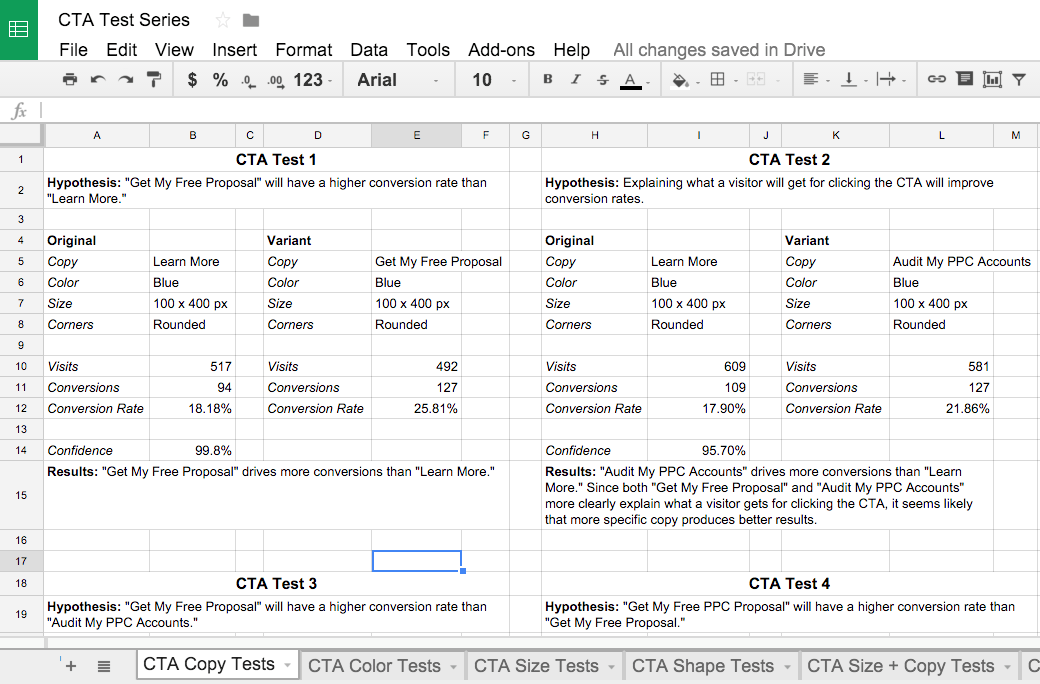by Aden Andrus • December 1, 2018
How a Great Testing Strategy Increased ROI By 88%
No man is an island…and no landing page test should be either.
Sure, without a good testing strategy, you might land a big testing win, but you won’t know why you won. And, you certainly won’t be able to use those results to guide future tests.
Maybe it was your hero shot…or your call to action…or your copy…or maybe you simply have the wrong traffic…or…

The possibilities are endless.
However, with a good testing strategy, figuring out what works for your audience and using that to increase your conversion rates and sales can be a fairly straightforward process.
How a Great Testing Strategy Works
For example, we recently increased a client’s conversion rate by 37%—with a single test.
Now, you’re probably thinking, “Wait, you just said that great conversion rates come from an effective testing strategy—not a single test!”
That’s true, but most “breakthrough” landing page tests aren’t the result of a single hypothesis. Instead, they are the culmination of a series of tests that have each provided new insight into your target audience.
In the case of this client, that’s exactly what happened. After running numerous unsuccessful or partially successful tests on the page, we still hadn’t produced the kind of results we wanted.

However, all those tests hadn’t been in vain, because they had taught us a lot about our audience. Our target audience was made up of millenials who were looking for a seamless online experience—tech-savvy, but also a bit skeptical of overly pushy sales tactics.
Most importantly, they wanted to be in control of their online experience.
To try and address this, we decided to try a “push-pull” strategy. So, instead of making the form the first thing they saw on the page, we switched to using a lightbox form that only appeared when the user clicked a CTA button.
As a result, our users had to click the button to get at the form and—when the did—they were rewarded with our form.
It was a simple idea, but it dramatically improved the conversion rate of our page. Now, instead of trying to convince our audience to fill out our form, we were letting our audience sell themselves and ask for the form—which was exactly what they wanted.
With this new strategy in play, our conversion rate jumped from 17.65% to 28.13%—producing 100 additional sales and $43,017 in revenue in just 3 months!
All of those extra sales came at no added marketing cost, so this one test increased the client’s return-on-ad-spend by 88%. Our testing strategy had finally paid off.
A Good Testing Strategy is Audience-Specific
With results like these, you might think that lightboxes are the holy grail of conversion rate optimization.
At first, we thought so too.
So, we tried lightboxes out with a variety of clients. The results were mixed.
One client’s conversion rate improved by 15%. For two other clients, their conversion rate stayed about the same. Another client’s conversion rate dropped by 18%!

What happened?
The problem was, flush with success, we had overlooked what made our lightbox test successful in the first place—lightboxes were a great fit for our millennial audience.
Obviously, lightboxes weren’t necessarily a great fit for other products, buyer personas and audiences.
This sort of over-generalization is a common problem for marketers. We’re always looking for the next marketing silver bullet and it’s easy to read an A/B testing case study and assume that you can use data from someone else’s tests to shortcut your way to conversion rate nirvana.
Unfortunately, it rarely works out that way.
Case studies are a great way to come up with testing ideas, but you can’t assume that what worked for someone else’s audience will be a perfect fit for your market.
Setting Up a Great Testing Strategy
The secret to successful landing page testing is creating a great testing stategy—one that teaches you something with every test. Creating and using a great testing strategy takes planning and documentation, but it will save you a lot of time and dramatically increase your profitability in the long run.
Build Your Buyer Persona
To begin, you should start by profiling your buyer persona(s).
Identify who your target audience is—their age, gender, role, responsibilities, budget and goals. What motivates them? What is their pain point? How does your product or offer resolve their problem?
To do this, you may need to talk to your sales team or even interview some of your current customers. Profiling your potential customers takes extra effort up front, but it can cut a lot of time off of your testing learning curve.
Come Up With Testing Hypotheses
Once you’ve profiled your buyer persona(s), use that profile to build your first landing page variant. This landing page should be a great match for your traffic, so make sure your messaging and targeting is on point for your target audience!
Once you’ve built your first variant, use your buyer persona to come up with a hypothesis about how your target audience might interact with your page. Does your page fit all their needs? Are there alternative ways that you could address the same needs?
Once you have a few hypotheses, build your testing strategy around those ideas.
For example, there might be a few different ways to write or present your CTA. Your first attempt might be the perfect version of your CTA, but there’s probably a better way to present your CTA that you can identify with a few A/B tests.
To see if changing CTA improves your conversion rate, you might put together a spreadsheet like this:
See how each test sets up the next test? You learn something from each iteration and then use that to guide your next test. Plus, everything is thoroughly documented, so if anyone ever wonders why you made a certain choice, you’ve always got a handy reference!
You can use this approach to test a wide range of landing page hypotheses. If you do it right, each test will provide more information about your audience and help you achieve the dramatic sorts of results you’re looking for.
Conclusion
Most successful landing page A/B tests are not the product of a lucky break—they are the result of a great, methodical testing strategy. You might not improve your conversion rate by 37% right off the best, but with the right testing strategy in place, you’ll get there eventually.
By the way, if you’d like me to take a look at your current landing page approach and give you some recommendations, let me know here or in the comments. I’d be happy to help you put together a winning testing strategy!
You’ve heard my two cents, now I want to hear yours. What sort of results have you seen with your testing efforts. Has a strategic approach helped you improve your conversion rate?






